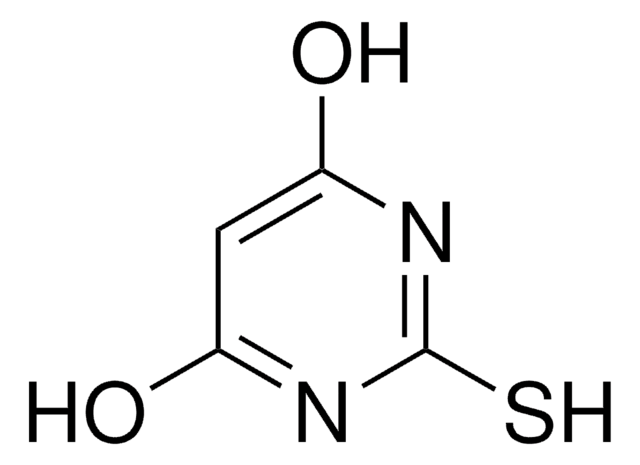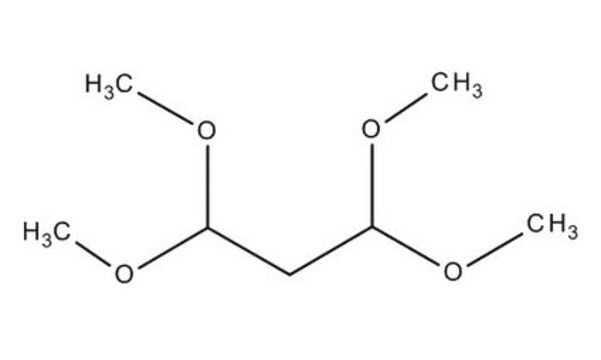404888
1-Methyl-2-phenylindole
99%
Sinónimos:
NSC 63793
Iniciar sesiónpara Ver la Fijación de precios por contrato y de la organización
About This Item
Fórmula empírica (notación de Hill):
C15H13N
Número de CAS:
Peso molecular:
207.27
Número CE:
Número MDL:
Código UNSPSC:
12352100
ID de la sustancia en PubChem:
NACRES:
NA.22
Productos recomendados
Nivel de calidad
Ensayo
99%
mp
98-100 °C (lit.)
grupo funcional
phenyl
cadena SMILES
Cn1c(cc2ccccc12)-c3ccccc3
InChI
1S/C15H13N/c1-16-14-10-6-5-9-13(14)11-15(16)12-7-3-2-4-8-12/h2-11H,1H3
Clave InChI
SFWZZSXCWQTORH-UHFFFAOYSA-N
¿Está buscando productos similares? Visita Guía de comparación de productos
Descripción general
Reaction of 1-methyl-2-phenylindole with nitrogen dioxide or with nitrous acid (NaNO2-CH3COOH) in benzene has been studied. 1-Methyl-2-phenylindole is reported to react with malondialdehyde (MDA) and 4-hydroxyalkenals to afford a stable chromophore with intense maximal absorbance at 586nm.
Aplicación
1-Methyl-2-phenylindole may be used in the following studies:
- The estimation of lipid peroxidation in third instar larvae of transgenic Drosophila melanogaster (hsp70-lacZ)Bg.
- As chromogenic agent for the determination of estimation of malondialdehyde (MDA) production.
- Colorimetric assay of lipid peroxidation.
- Synthesis of 1-methyl-2-phenyl-3-(1,3,4-thiadiazol-2-yldiazenyl)-1H-indole.
- Synthesis of 3-(5-ethyl-1,3,4-thiadiazol-2-yldiazenyl)-1-methyl-2-phenyl-1H-indole.
Reactant for preparation of:
Reactant for:
- Cyano indoles
- Difluorohydroxy indoles
Reactant for:
- Carboxylation of indoles
- Allylation of indoles
- Formylation of indoles
- Nitrosylation of indoles
Palabra de señalización
Warning
Frases de peligro
Consejos de prudencia
Clasificaciones de peligro
Eye Irrit. 2 - Skin Irrit. 2 - STOT SE 3
Órganos de actuación
Respiratory system
Código de clase de almacenamiento
11 - Combustible Solids
Clase de riesgo para el agua (WGK)
WGK 3
Punto de inflamabilidad (°F)
Not applicable
Punto de inflamabilidad (°C)
Not applicable
Elija entre una de las versiones más recientes:
¿Ya tiene este producto?
Encuentre la documentación para los productos que ha comprado recientemente en la Biblioteca de documentos.
Los clientes también vieron
M E Nieves-Ramírez et al.
mSystems, 3(3) (2018-07-03)
Blastocystis is the most prevalent protist of the human intestine, colonizing approximately 20% of the North American population and up to 100% in some nonindustrialized settings. Blastocystis is associated with gastrointestinal and systemic disease but can also be an asymptomatic
Yasir Hasan Siddique et al.
Dose-response : a publication of International Hormesis Society, 10(1), 1-10 (2012-03-17)
Malondialdehyde (MDA) is used for the estimation of damage by reactive oxygen species. MDA is a major reactive aldehyde resulting from the peroxidation of biological membranes. The most common method used to assess MDA production is the thiobarbituric acid (TBARS)
Yasir Hasan Siddique et al.
Pharmaceutical methods, 3(2), 94-97 (2013-06-20)
A method using 1-methyl-2-phenylindole was developed for the estimation of lipid peroxidation in third instar larvae of transgenic Drosophila melanogaster (hsp70-lacZ)Bg (9). The method is specific for the estimation of malonaldehyde. The larvae were exposed to 0.0025, 0.025, 0.050, and
Marcin Magierowski et al.
Journal of gastroenterology, 53(1), 52-63 (2017-02-27)
Aspirin exerts side effects within the gastrointestinal tract. Hydrogen sulfide (H Wistar rats with or without capsaicin-induced denervation of sensory neurons were pretreated with vehicle, CORM-2 (5 mg/kg intragastrically), or NaHS (5 mg/kg intragastrically) with or without capsazepine (5 mg/kg intragastrically) or N
D Gérard-Monnier et al.
Chemical research in toxicology, 11(10), 1176-1183 (1998-10-20)
Under acidic and mild-temperature conditions, 1-methyl-2-phenylindole was found to react with malondialdehyde (MDA) and 4-hydroxyalkenals to yield a stable chromophore with intense maximal absorbance at 586 nm. The use of methanesulfonic acid results in optimal yields of chromophore produced from
Global Trade Item Number
| Número de referencia del producto (SKU) | GTIN |
|---|---|
| 404888-50G | |
| 404888-10G | 4061831987058 |
Nuestro equipo de científicos tiene experiencia en todas las áreas de investigación: Ciencias de la vida, Ciencia de los materiales, Síntesis química, Cromatografía, Analítica y muchas otras.
Póngase en contacto con el Servicio técnico










